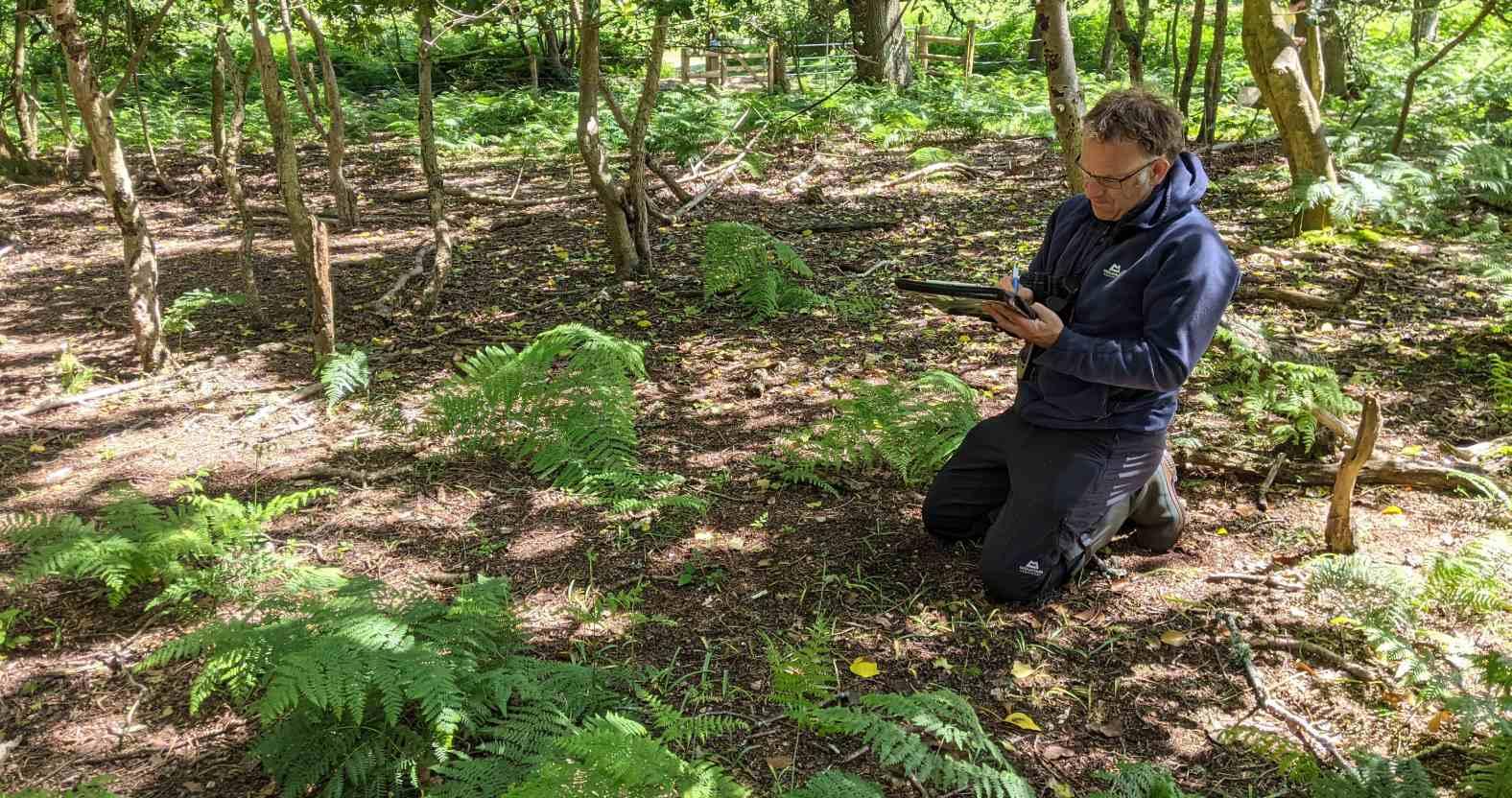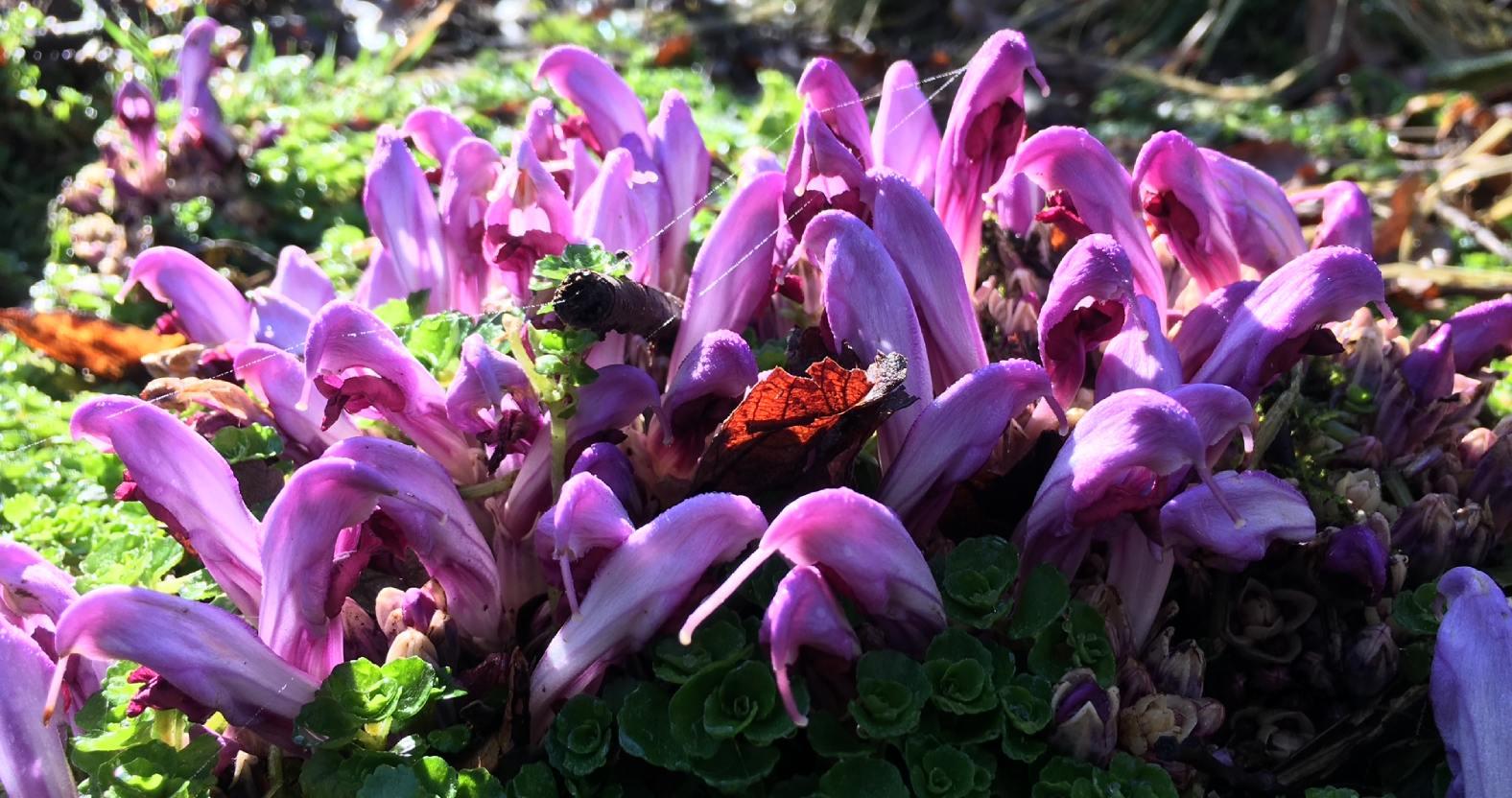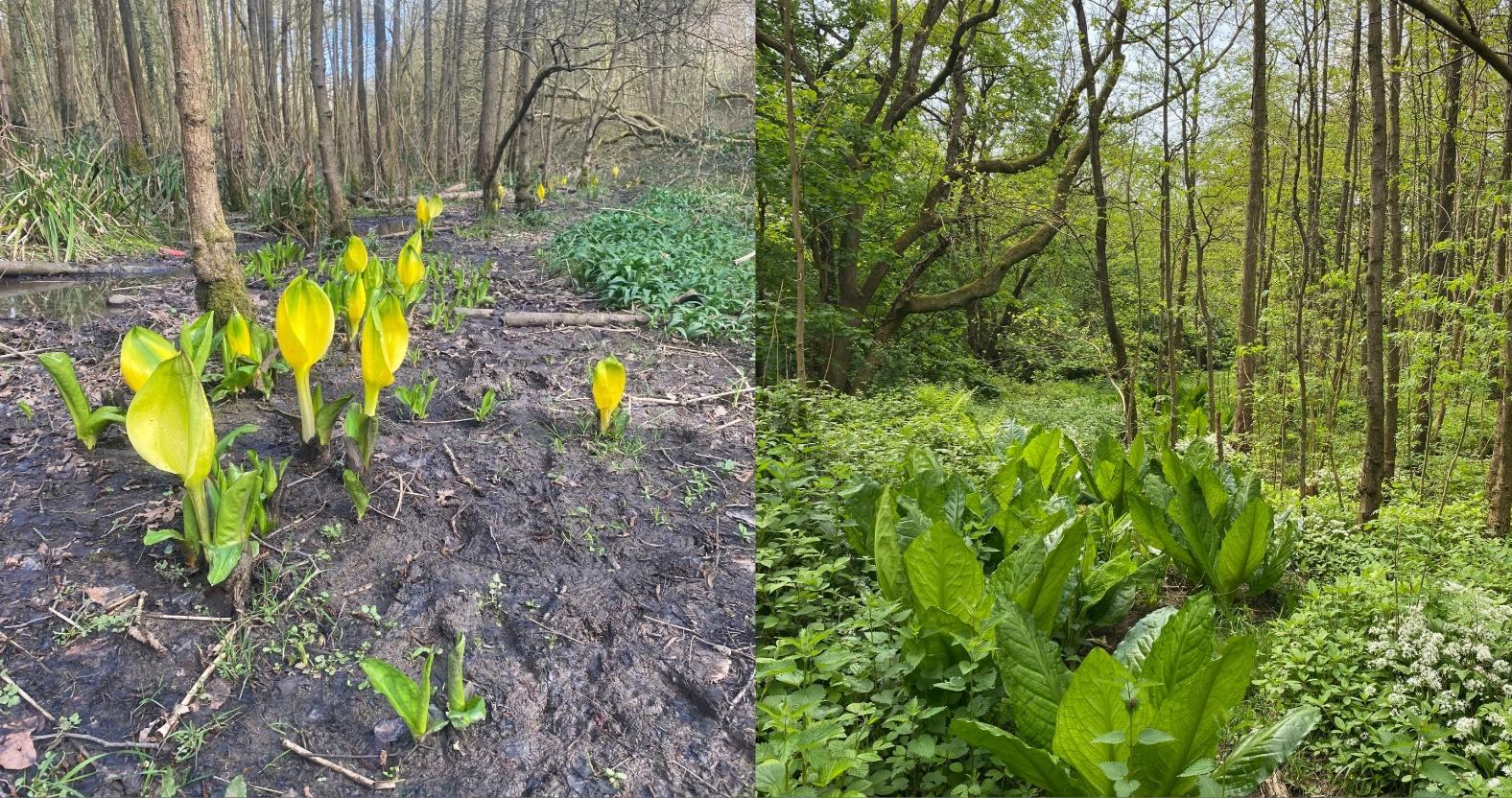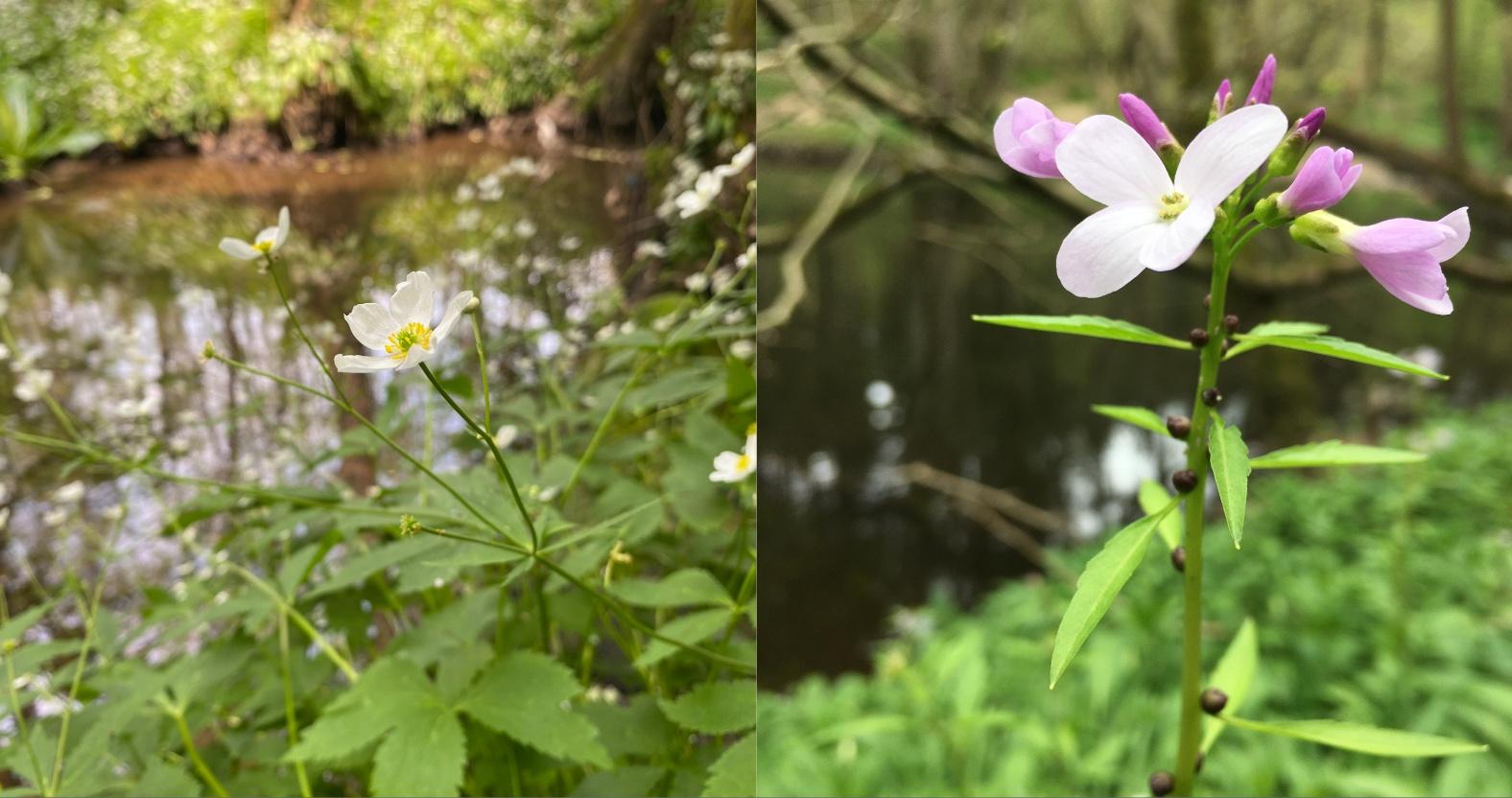Subscribe to trusted local news
In a time of both misinformation and too much information, quality journalism is more crucial than ever. By subscribing, you can help us get the story right.
- Subscription costs less than £1 a week with an annual plan.
Already a subscriber? Log in here.
04
Aug 2024
If you go down to the woods today... you might find some alien invaders

There are a lot of reasons to visit Harrogate, but for a certain fanatical breed of botanist there are several more than there are for the rest of us, and they live along the banks of Oak Beck.
That’s because for decades, exotic plantlife was allowed to escape the bounds of Harlow Carr Gardens and form colonies further downstream.
With sharp eyes and no small amount of specialist knowledge, explorers can spot fringecups, broadleaved cuckoo-flower, aconite-leaved buttercup, Abraham-Isaac-Jacob, Caucasian pennycress and Persian ivy.
Another one is purple toothwort, a parasitic plant that lives on willows and has found its way downstream as far as Knaresborough.
The alien species come from across the world, from the Pacific North West to Turkey and eastern Russia, and they have apparently been living along the beck for decades.
Kevin Walker grew up in the area and has been visiting the beck since he was a child. He also happens to be head of science for the Botanical Society of Britain and Ireland. He told the Stray Ferret:
I’ve recorded about 50 garden escapes between Oak Beck and Knaresborough, and I’m fairly sure at least 14 of those came from Harlow Carr.
It probably happened before the RHS took over Harlow Carr in 2000. I think the Northern Horticultural Society [which founded and ran the gardens] used to dump all its garden waste next to the beck [Harlow Beck, which runs into Oak Beck] and that’s how these species came to be down there. That was probably back in the ’50s, ’60s and ’70s.

The parasitic purple toothwort. Photo: Kevin Walker.
But while these exotic weeds delight visiting “plant-twitchers”, as Kevin calls them, some of them are causes for serious concern.
One of the most prolific is coralroot, which has a pink flower and reproduces by dropping bulbils – rather like above-ground bulbs – which fall off its stem and grow new plants. It is native to Britain – it grows in the woodlands of the High Weald in south-east England – but it’s very rare. According to Kevin, the Oak Beck strain almost certainly came from garden coralroot plants, originally from central and eastern Europe, which were very popular in Victorian gardens.
But the most worrisome invader is Lysichiton americanus – or American skunk cabbage – which favours the squelchy areas on the north bank of Oak Beck and has been sighted as far downstream as Knaresborough.
Mr Walker said:
It was a favourite in Victorian bog gardens, but it produces incredibly thick rhizomes, and it’s almost impossible to get rid of.
It produces quite attractive yellow flowers in spring, but the leaves are produced after the flowers, and when they come they’re absolutely huge – three or four feet high – and outcompete everything else.
It dominates some very sensitive areas. Other species that like those marshy places, such as the marsh marigold and yellow-leaved saxifrage, tend to like it fairly open and they get crowded out.

The yellow flowers of American skunk weed appear before the large leaves. Photos: Kevin Walker.
Oak Beck is possibly the only place in the world where both American and Asian skunk cabbages grow together, and there’s even been the world’s first report of them hybridising there – enough to give the plant-twitchers palpitations.
But L. americanus was listed as an invasive species in 2016, meaning that it was banned from sale in the UK. Landowners are advised to dispose of plants where possible, and must not intentionally allow them to spread beyond their land.
There is no suggestion that Harlow Carr allowed any species to spread downstream intentionally, but given that some experts hold it responsible, does it have any plans to clear up its botanical mess?
After all, Oak Beck is biologically a sensitive area. Once a pristine habitat, even now, Birk Crag – literally a stone’s throw up the slope – is considered a site of scientific interest because it is one of just two locations in the UK that are home to the rare chestnut click beetle.
According to Kevin Walker:
It’s also one of the few sites where you can see the gametophyte phase of the Killarney fern, and it’s also a really good, A* site for fungi.
The RHS’s website would suggest that it might do everything it can. It says:
By not allowing plants to escape from gardens and disposing of unwanted plants and weeds carefully, gardeners can help reduce the spread of invasive non-native species.
And it warns:
It is a criminal offence to plant or cause to grow a non-native invasive species in the wild.
Paul Cook, curator of RHS Harlow Carr, said:
The Lysichiton americanus is a high priority as it’s on the list of plants that need controlling. We’ve removed it from the garden, and before we did that in 2015 we were already deadheading the flowers before they set seed.
We’ve been taking it up from parts of Harlow Beck, but once it gets to Oak Beck, that’s a long stretch of water, and it’s not our land.

Paul Cook, curator of RHS Harlow Carr. Photo: Dominic Lipinski.
The RHS, then, appears effectively to be kicking the problem downstream to North Yorkshire Council, which owns the land along Oak Beck.
According to guidance from Defra (Department for the Environment, Food and Rural Affairs), local authorities such as North Yorkshire Council “must consider what they can do to conserve and enhance biodiversity in England”.
Among the things that Defra says councils should do to improve habitats is consider “using native and sustainably sourced trees when planting”, “implementing measures to prevent the spread of invasive species”, and “promoting and encouraging nature-based solutions, restoration of natural processes and landscape recovery”.
Yet there appears to have been little or no appetite at the council – formerly Harrogate Borough, now North Yorkshire – to get to the grips with the situation.
It could be that the council does not regard non-native species as a problem. Even Kevin Walker says that most of the non-natives “are not widespread enough to be a problem”.

Aconite-leaved buttercup (left), native to central Europe, and right, coralroot. Photos: Kevin Walker.
Or it may simply be that the council regards the expense of restoring natural habitats such as Oak Beck as prohibitive. It is, after all, a degraded environment. Most of the oaks that give the dale its name are gone, a golf course has denuded one long stretch of the north bank of its vegetation, and the water no longer sustains some of the species that were common just a generation ago, such as the native white-clawed crayfish.
The third possibility is that the council has not been aware of the problem, even though it has been apparent for decades.
Barrie Mason, North Yorkshire Council's assistant director for highways and transportation, said:
We take environmental matters very seriously and review the control of invasive species on a case-by-case basis.
We work pro-actively through our volunteer rangers to undertake the control of invasive species such as Himalayan Balsam.
However, this is the first time we have been made aware of an issue in the area around Oak Beck and we are investigating.
In the meantime, the RHS's Paul Cook is open to offers of collaboration on the issue. He said:
We need to work with North Yorkshire Council and APHA [Defra's Animal and Plant Health Agency] to look at what the long-term plan for these areas should be. If it’s about habitat restoration, what does that look like?
0